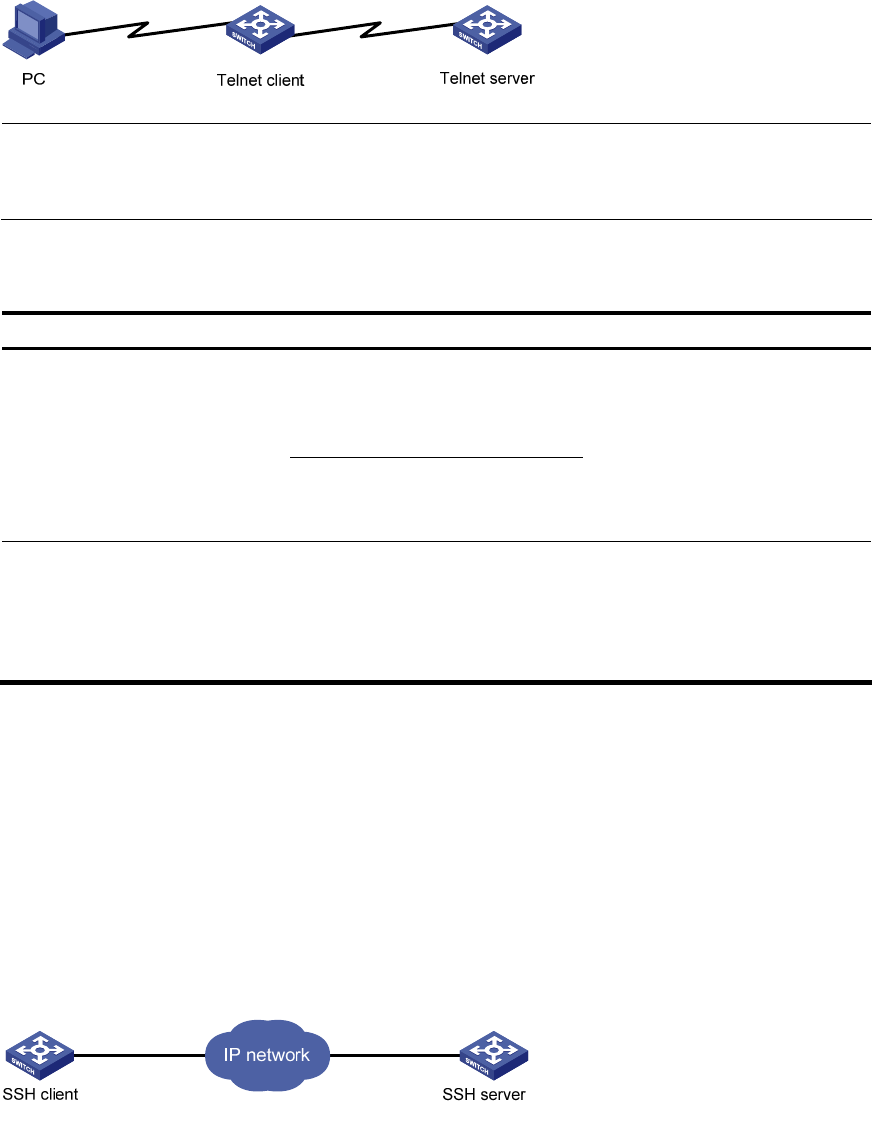
By default, you can log in to the device through the console port without authentication and have user
privilege level 3 after login. For information about logging in to the device with the default configuration,
see “Configuration requirements.”
Figure 16 Log in to another device from the current device
NOTE:
If the Telnet client port and the Telnet
server port that connect them are not in the same subnet, make sure
that the two devices can reach each other.
Configuration procedure
Follow the step below to configure the device to log in to a Telnet server as a Telnet client:
To do… Use the command… Remarks
telnet remote-host [ service-port ] [ |
[ source { interface interface-type
interface-number | ip
ip-address } ] ]
Configure the device to log in to a
Telnet server as a Telnet client
telnet ipv6 remote-host [ -i
interface-type interface-number ]
[ port-number ]
Required
Use either command
Available in user view
Specify the source IPv4 address or
source interface for sending Telnet
packets
telnet client source { interface
interface-type interface-number | ip
ip-address }
Optional
By, no source IPv4 address or
source interface is specified. The
source IPv4 address is selected by
routing.
Logging in through SSH
Introduction
Secure Shell (SSH) offers an approach to log into a remote device securely. By providing encryption and
strong authentication, it protects devices against attacks such as IP spoofing and plain text password
interception. The device supports SSH, and you can log in to the device through SSH to remotely manage
and maintain the device, as shown in Figure 17.
Figure 17 SSH login diagram
The following table shows the configuration requirements of SSH login.
47


















